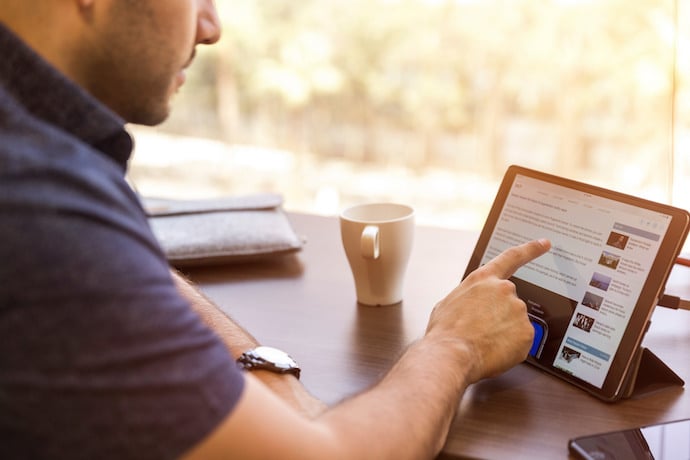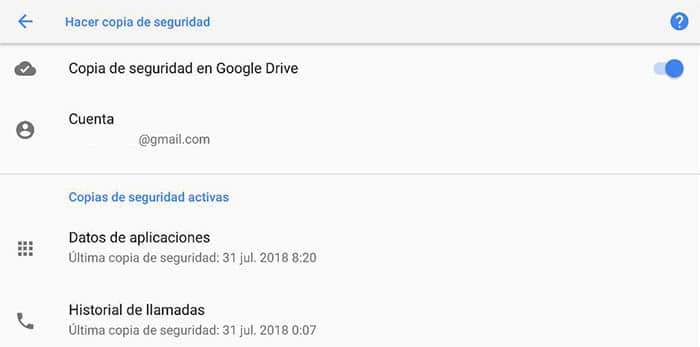
If the performance of your tablet has been declining over time, a thorough cleaning may come in handy to regain all its energy. It is a very simple process, but you will have to take into account a series of aspects so that everything runs correctly and you do not lose any of your personal data. In the following guide we are going to show you how to format your Android tablet At the same time, we will recommend some practices to keep in mind to keep all our data safe.
Save all data on the tablet

It is very important that when formatting a device we have the certainty that we have saved all the personal data and documents that we may need later, since the process of reboot with factory settings it will wipe out all the memory of the device and we will not be able to recover anything. Normally the data to be saved goes through contacts, downloads, photos and email, although you should always do a mental review of which applications and which options are essential in your day-to-day life.
Blessed cloud
The key to worry-free and risk-free formatting is in the cloud. If you do not use cloud-based services today, you should try some, since you will not have any type of concern when it comes to losing the device, suffering a breakdown or performing a system restore.

The practical and easy option is in the backup that Android offers, a backup that is saved in your Google Drive account and that can be restored on that or another device. This way you will be able to take with you the mail, the calendar, the application settings, all the installed applications and all the personalized settings that you have made on the device. To activate it you will only have to go to the Backup section within System Settings. It is the easiest and fastest option, although you can also go step by step to control everything.
- The email: The most normal thing is that you are using a cloud-based mail service with IMAP settings (as Google does with Gmail, for example), but if at this point you still have an account that does not leave a copy on the server, it will be better to you activate this option so as not to lose sight of them. The most common case is that on an Android tablet you are using a Google account, so check that the synchronization is activated and everything will be controlled. Go to Settings, Accounts, and check that your Gmail account is synced.
- Contacts: The contact list is more like a phone, but if you also have it on your tablet, remember to save it before formatting. You can export all the contacts from the Contacts menu and save them to the microSD card, although once again you could sync them with your Google account and keep an up-to-date copy in the cloud. Thus, when you restart the device, you will be able to recover all the contacts immediately. As with email, you must enter Settings, Accounts, to configure the synchronization.
- The pictures: The most direct method is to copy all the photos to the microSD card or connect the tablet to a computer and save the DCIM folder, which is the folder where all the photos taken by the camera are stored (don't forget to check the rest of the folders ). But once again the cloud has a great solution, and this time we like to use the Google Photos app. The google photo manager usually arrives installed in the latest versions of Android, but if this is not your case, you can always download it from the Play Store. The service offers you unlimited storage of photos as long as you agree not to upload them to more than 16 megapixels and trust its compression algorithm, a method that will reduce the size of the photo without affecting the quality of the same in an appreciable way. If you give the necessary permission, Google Photos will make a copy in the cloud with your Google account of all your photos (and can also select the image folders of other installed applications). In this way, to recover your images you will only have to reinstall Google Photos.
- Downloads, music and miscellaneous files: For everything else you will have to check manually. We're not a big fan of installing third-party apps for backup, as you'll save more files than you need in the end. Focus on the essentials and check the folders from the file explorer you have installed on your tablet. From there, copy the files that interest you to the microSD, or save them temporarily to a new folder that you will later extract by connecting the tablet to the PC.
Clear all data on the tablet

It's time to press the button. There is no going back. If you've already gone through all your personal belongings and are ready to start from scratch, it's time you hit the reset button. This command is normally found in Settings, System, Recovery Options. The menu will depend on each manufacturer, but it will always be related to the concept "restore to factory settings". Remember not to select the option "format microSD card" since we will lose all the data that we have stored there.
As you can see, formatting a tablet is dangerously easy, and the only thing that hinders the process is being able to maintain the peace of mind that you have not lost anything important. The trick is to trust cloud services, since they facilitate the entire process and help us not worry about whether our data is safe or not on the tablet. We better talk about trusting the company that stores our data in the cloud another day.